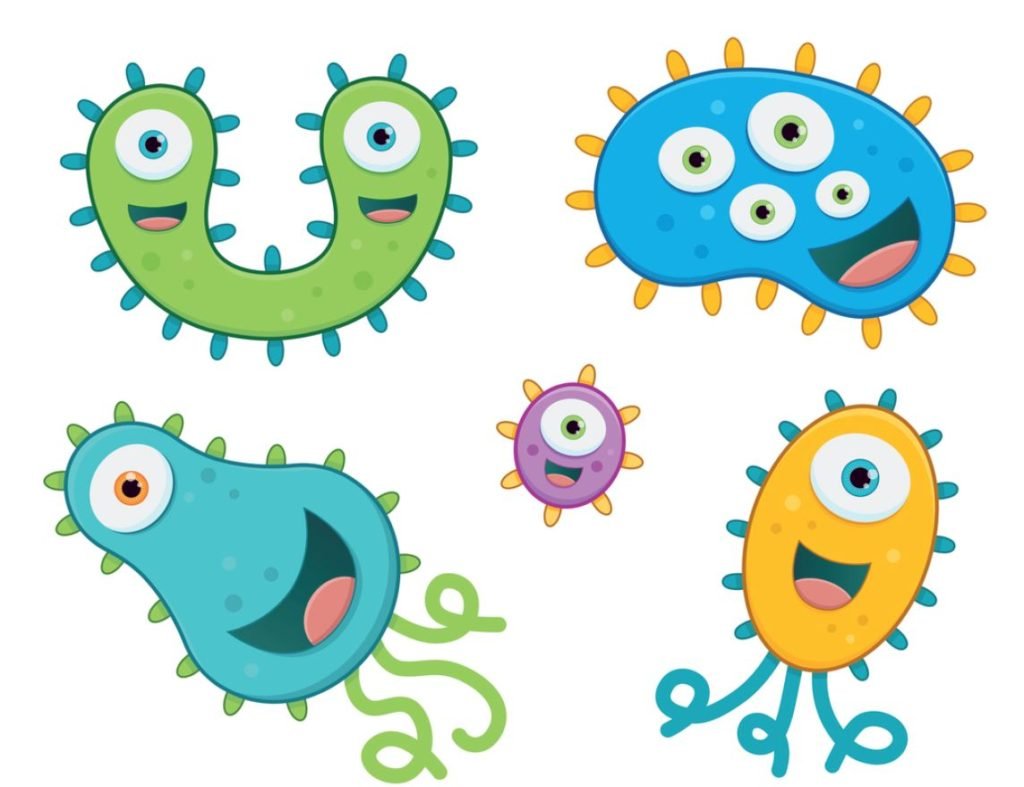
3 steps to a healthy gut
We are more bug than human.
When I tell kids this they think it’s funny, but it’s true and to me that’s fascinating. What am I referring to? The gut microbiome. The microbiome consists of trillions of bugs (microorganisms) that live in our gut. They’re mainly bacteria but also viruses, fungi and protozoa. These bugs are involved with almost every system in our body and they outnumber human cells by 10:1. And if that isn’t amazing enough, the more we learn the more we realise how crucial they are for normal child development as well as ongoing health.
What’s a healthy microbiome?
If we were to look at different populations we’d see a variety of bugs so there isn’t a perfect microbiome although certain bugs have been identified as better than others in promoting well-being. What is also clear is that a diverse and stable microbiome is a healthy one. An unhealthy microbiome develops when the strains become imbalanced (more bad than good) and this is called dysbiosis.
So far we know that a healthy microbiome can help digestion of food, promote a strong & balanced immune system, support nervous system function and optimise mood. It also produces numerous essential compounds and nutrients for growing children.
Phew! Those are some busy bugs! So to say they’re important is an understatement.
Dysbiosis and diseases:
In case you need more convincing of how important a healthy microbiome is, here are some conditions that have been associated with an unhealthy microbiome.
- Eczema
- Asthma
- Food allergies
- Autoimmune conditions
- Inflammatory bowel disease
- Irritable bowel disorder
- Diabetes
- Obesity
- Behavioural problems like Autism
- Mood disorders like anxiety and depression
- Clostridioides difficile diarrhoea
Although dysbiosis and diseases do co-exist, the exact mechanism is often unclear. It can be very hard to prove what’s meaningful and whether the dysbiosis causes the disease or the other way around. I know from my practice though that taking steps to promote a healthy gut has positive impacts on so many of my patients. And more and more evidence is emerging so watch this space!
How do kids grow a healthy gut?
A child’s microbiome seems to start developing before they’re born and are happily swimming in mum’s tummy. It’s then heavily influenced by the mode of delivery (natural versus c-section) and even more importantly by what milk they get. As babies grow up it’s their exposure to foods and their environment that promotes a healthy gut. This is especially important within their first few years of life as by around 3 years old, their microbiome is almost fully formed to be their adult microbiome. This doesn’t mean that it can’t be changed when they’re older, it’s just more difficult.
So what should our children eat and do to promote gut health?
3 steps to good gut health:
Feed the bugs. Eat the bugs. Protect the bugs.
I’ve created a 3 step framework to guide you on how to optimise your child’s microbiome. Although I’ve many detailed recommendations to share, in this blog I’m introducing you to the concept as well as sharing a few simple tips to implement.

1. Feed the bugs
Our children should eat a good variety of foods including many with fermentable fibres and undigestable starches known as prebiotics. Prebiotics are essentially food for our microbiome helping them to survive and grow. They are present in breastmilk and are now even being added to some milk formulas. For older children many foods contain prebiotics. I’ve listed a few here. Be aware though that if your child has dysbiosis increasing these types of foods can make them bloated or gassy causing discomfort so you may need to proceed with caution.

2. Eat the bugs
When our children eat foods rich in live organisms or supplement with a probiotic they are helping to support and grow their own microbiome. We don’t yet understand if this directly causes growth of the good bugs or if it supports the microbiome in other ways. I prefer foods to supplements so this means getting our kids to eat fermented foods which are naturally rich in probiotics. Before you say that they’ll never ever eat sauerkraut and kimchi, you may just be surprised. Children can easily learn to love these foods especially if introduced at a young age. The trick is to start early in small amounts and to make it an ongoing part of regular meals. Some children can’t tolerate fermented foods as they’re high histamine foods so be aware of this.
3. Protect the bugs
We need to decrease what can harm and increase what can help our children’s microbiome. Common things that are harmful are processed junk foods as well as certain medications like antibiotics, antacids and ibuprofen. Please don’t go against any specific medical advice you’ve been given but with any medication it’s always important to be able to discuss your concerns with your doctor and weigh up risk versus benefit. Some things that can help our microbiome are playing in the dirt, having animals and siblings as well as good sleep. So this means less screen time indoors and more fun outdoors 🙂
Take home message:
Whilst we are in the infancy of understanding the gut microbiome and it’s significant influence on health, we are starting to learn more from ongoing research. What is clear though is that dietary and lifestyle choices have an impact. This means that you can absolutely help your child to have a healthier gut and to live a healthier and happier life.
If you’ve found this interesting please share & sign up for my newsletter 🙂
